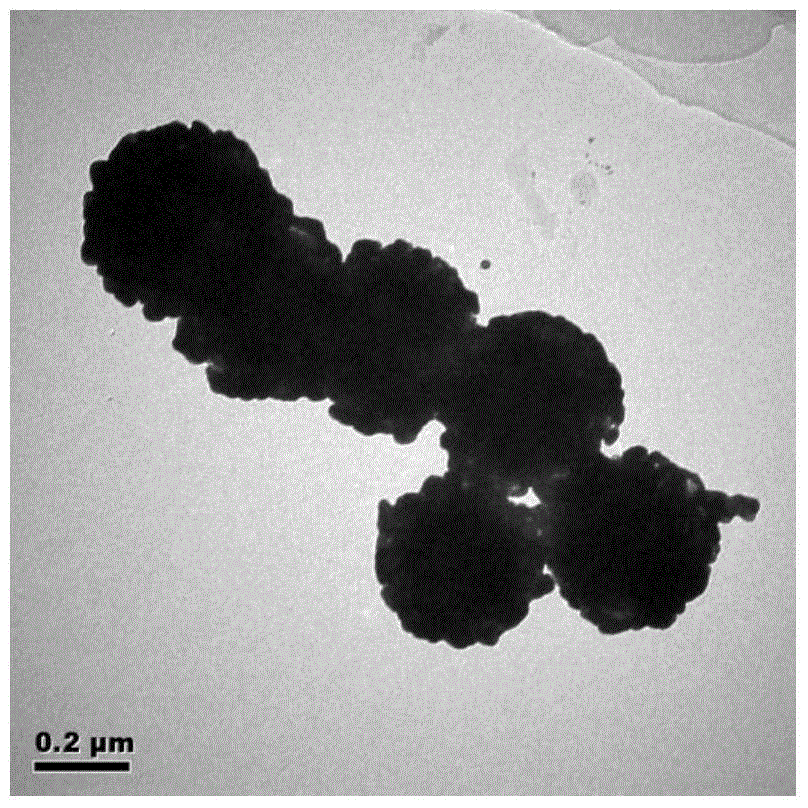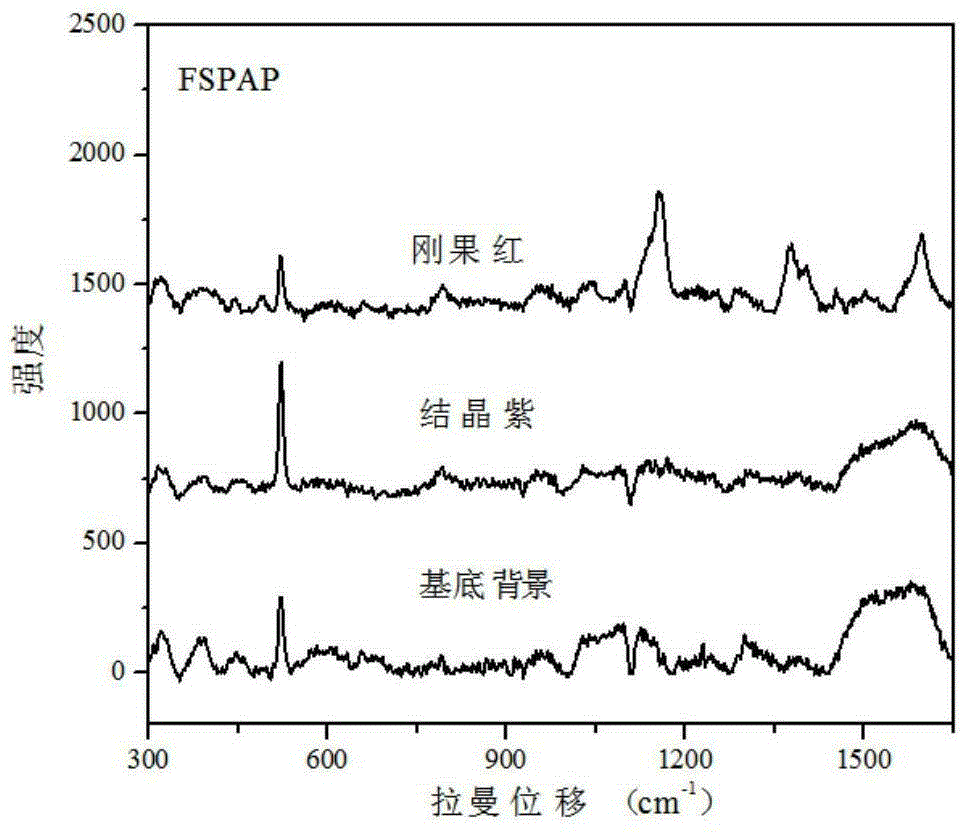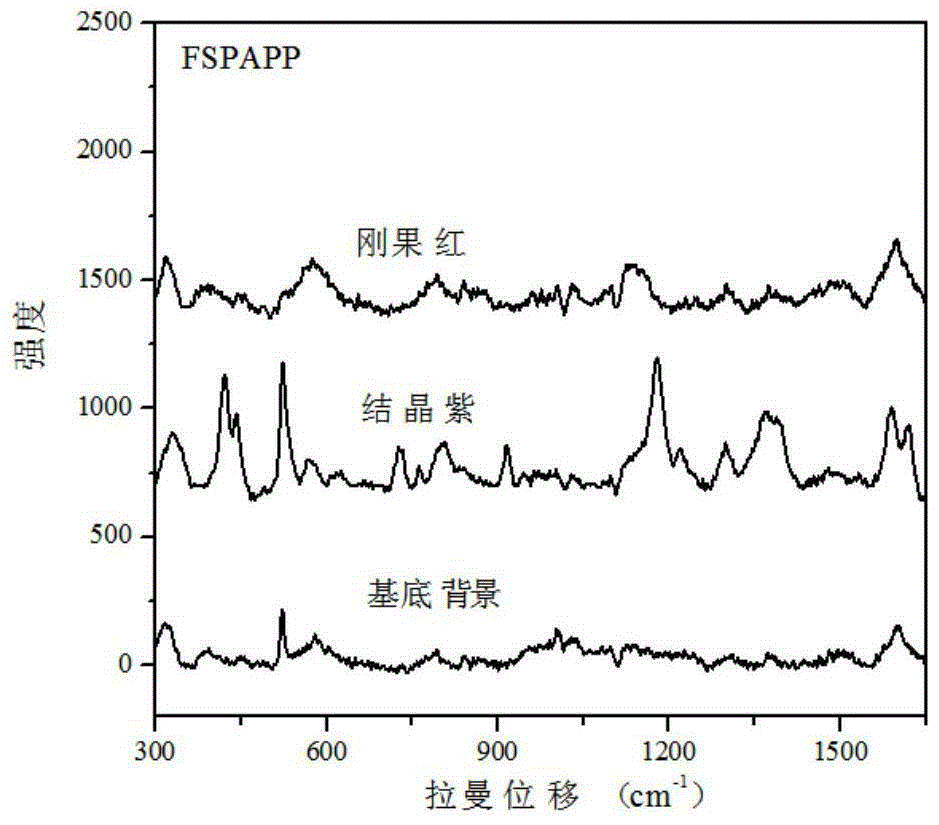Substrate available for detecting selectivity of anionic/cationic pigment
An anion-cation, selective technology, applied in material excitation analysis, Raman scattering, etc., can solve problems such as interference SERS signal detection, and achieve the effect of easy operation
- Summary
- Abstract
- Description
- Claims
- Application Information
AI Technical Summary
Problems solved by technology
Method used
Image
Examples
Embodiment 1
[0025] Example 1Fe 3 o 4 Preparation of nanoparticles: 2.7g FeCl 3 ·6H 2 O mixed with 7.2g sodium acetate and 100mL ethylene glycol and stirred magnetically for 1h, reacted at a high temperature of 200°C for 12h, dried the product in vacuum at 50°C for 2h, and collected Fe 3 o 4 Magnetic nanoparticles; Fe 3 o 4 / SiO 2 Preparation of magnetic particles: get the nano-Fe prepared in 0.2g step (1) 3 o 4 Disperse in 20mL nitric acid solution (0.1mol / L), sonicate for 10min, wash 6 times with deionized water, disperse in the mixture (20mL ethanol + 4mL deionized water), sonicate for 10min, pour into a three-neck round bottom flask, Continuously add 1mL of ammonia water and 0.8mLTEOS dropwise under mechanical stirring. After the reaction is carried out for 3h, the resulting precipitate is dried in vacuum at 60°C for 1h to obtain Fe 3 o 4 / SiO 2 nanoparticles. Take 0.1mgFe 3 o 4 / SiO 2 Disperse the magnetic particles into 100mL of 2% PDDA solution (10mL of 20% PDDA + 90m...
Embodiment 2
[0026] Example 2 The preparation method of the selective detection SERS substrate modified by polyelectrolysis is the same as that in Example 1. Enrichment and detection of pigment mixed solution: Disperse 0.2 mg polyelectrolyte-modified magnetic nanoparticles in 1 mL of pigment mixed solution, and the concentration of each of the two pigments is 1×10 -4 mol / L. After 1 hour, the magnetic particles were collected with an external magnetic field, and the pigment-enriched magnetic particles were placed on a silicon wafer, and the signal was collected by a portable Raman spectrometer with a scanning time of 5 s to obtain the SERS spectrum of the pigment mixture.
PUM
 Login to View More
Login to View More Abstract
Description
Claims
Application Information
 Login to View More
Login to View More - R&D
- Intellectual Property
- Life Sciences
- Materials
- Tech Scout
- Unparalleled Data Quality
- Higher Quality Content
- 60% Fewer Hallucinations
Browse by: Latest US Patents, China's latest patents, Technical Efficacy Thesaurus, Application Domain, Technology Topic, Popular Technical Reports.
© 2025 PatSnap. All rights reserved.Legal|Privacy policy|Modern Slavery Act Transparency Statement|Sitemap|About US| Contact US: help@patsnap.com



